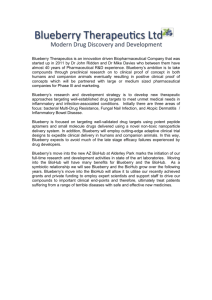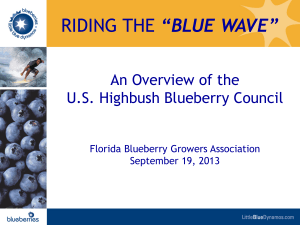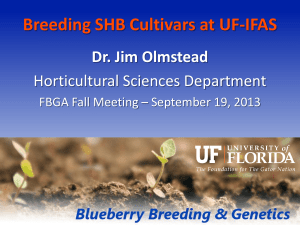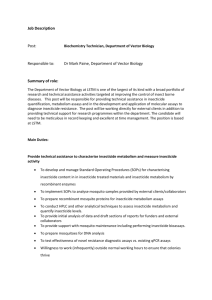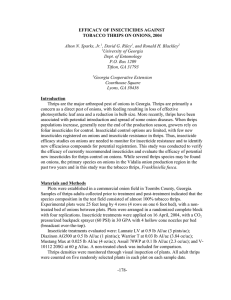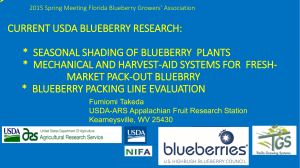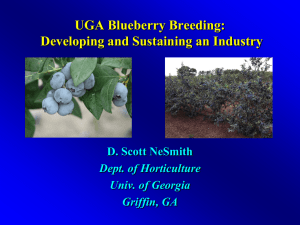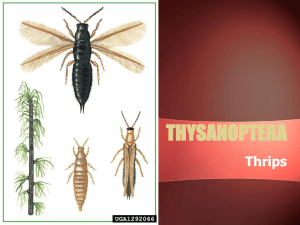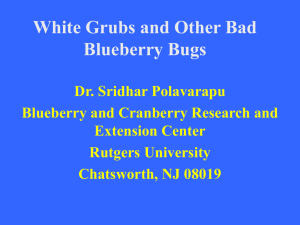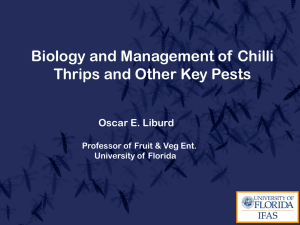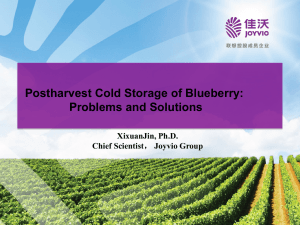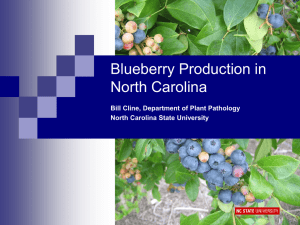Conventional Insecticide - university of florida entomology and
advertisement
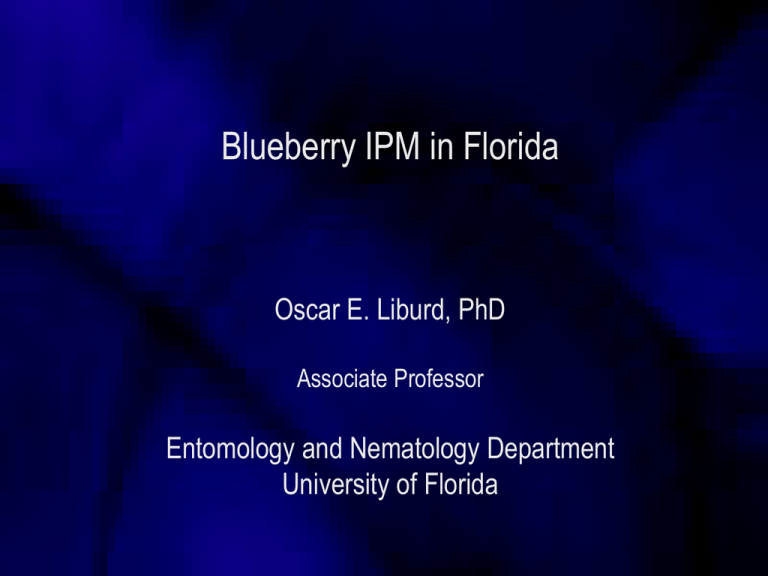
Blueberry IPM in Florida Oscar E. Liburd, PhD Associate Professor Entomology and Nematology Department University of Florida Chronological Order of Blueberry pests Flower thrips Blueberry gall midge Cranberry fruitworm Spotted wing drosophila Blueberry bud mite Flea beetle Flower Thrips, Frankliniella bispinosa Ovipositional Injury •Travel along wind currents • Multiple generations per year Size of thrips populations in relation to flower phenology Percentages of opened flowers 1 10 70 90 20 250 Average # of Thrips captured 200 x column 1 vs y column 1 Col 1 vs Col 2 150 100 50 0 0 5 10 15 Days after blooming 20 25 Flower thrips (left); Chilli thrips (right) (Scirtothrips dorsalis) Injuries resulting from chilli thrips Management of thrips Monitoring for adults White sticky boards floral tapping on white paper Conventional insecticides Delegate 3-6 oz per acre (biological Insecticide) Malathion (organophosphate) Assail (Neo-nicotinoid) Organic insecticide Entrust Blueberry gall midge, Dasineura oxycoccana (Johnson) Blueberry gall midge Management of blueberry gall midge Monitoring for adult emergence Bucket traps Conventional insecticides Delegate 3-6 oz per acre (Biological Insecticide) Malathion (organophosphate) **Assail (Neo-nicotinoid) Organic insecticide Entrust, Pyganic Blueberry bud mite, Acalitus vaccinii (Keifer) Feeds on the under-scale of buds The mite is whitish, elongate and very small (1/125 of an inch long) Blueberry bud mite injury Confused with frost damage Fewer fruits with Pimpeling Bud scale under dis Mcro. Management of blueberry bud mite Removal of infected branches through pruning Pruning old canes Post-harvest application insecticide/miticides such as endosulfan Summer oils Cranberry Fruitworm, Acrobasis vaccinii Riley Cranberry Fruitworm Larvae are light green with a dark head capsule Mature larvae are about ½ inch in length Silk webbing deformed Management of cranberry fruitworm Monitoring for adults Conventional Insecticide Delegate Assail Confirm 2F (tebufenozide) Organic Insecticide Entrust Bacillus thuringiensis (Bt) Blueberry maggot Management of blueberry maggot Monitoring for adults Conventional Insecticide Assail Imidan Monitoring trap for BMF Organic Insecticide Entrust Spotted Wing Drosophila Several generations per year Larvae develop inside fruit Fruit becomes soft and unmarketable Management of Spotted Wing Drosophila Monitoring for adults Conventional Insecticide Delegate Mustang Organic Insecticide Entrust Monitoring trap for SWD Bait Solution Spotted Wing Drosophila Yeast-Sugar Bait Solution Recipe: 2 teaspoons of bakers yeast 4 teaspoons of sugar 2 cups of water Mix and pour ≈1 ½ inches of yeast bait into cup Flea beetles in Blueberry Blueberry leaf beetle Colaspis pseudofavosa Damage Flea beetles in Blueberry Red-headed flea beetle Systena frontalis Damage Management of flea beetles Monitoring for adults Conventional Insecticide Assail Mustang Monitoring for flea beetles Organic Insecticide Entrust Common Beneficial Insects Coleoptera - Coccinellidae; lady beetles Aphids thrips - Carabidae; ground beetles Weed seeds Lepidoptera eggs Common Beneficial Insects Hemiptera Bigeyed bug, Geocoris spp. Minute pirate bug, Orius spp. Common Beneficial Insects Neuroptera Green lacewings Diptera Hover or Flower flies Acknowledgements Small Fruit and Vegetable IPM Lab Florida Blueberry Growers Association for our funding research oeliburd@ufl.edu (352) 273-3918 http://entnemdept.ufl.edu/liburd/fruitnvegipm/
